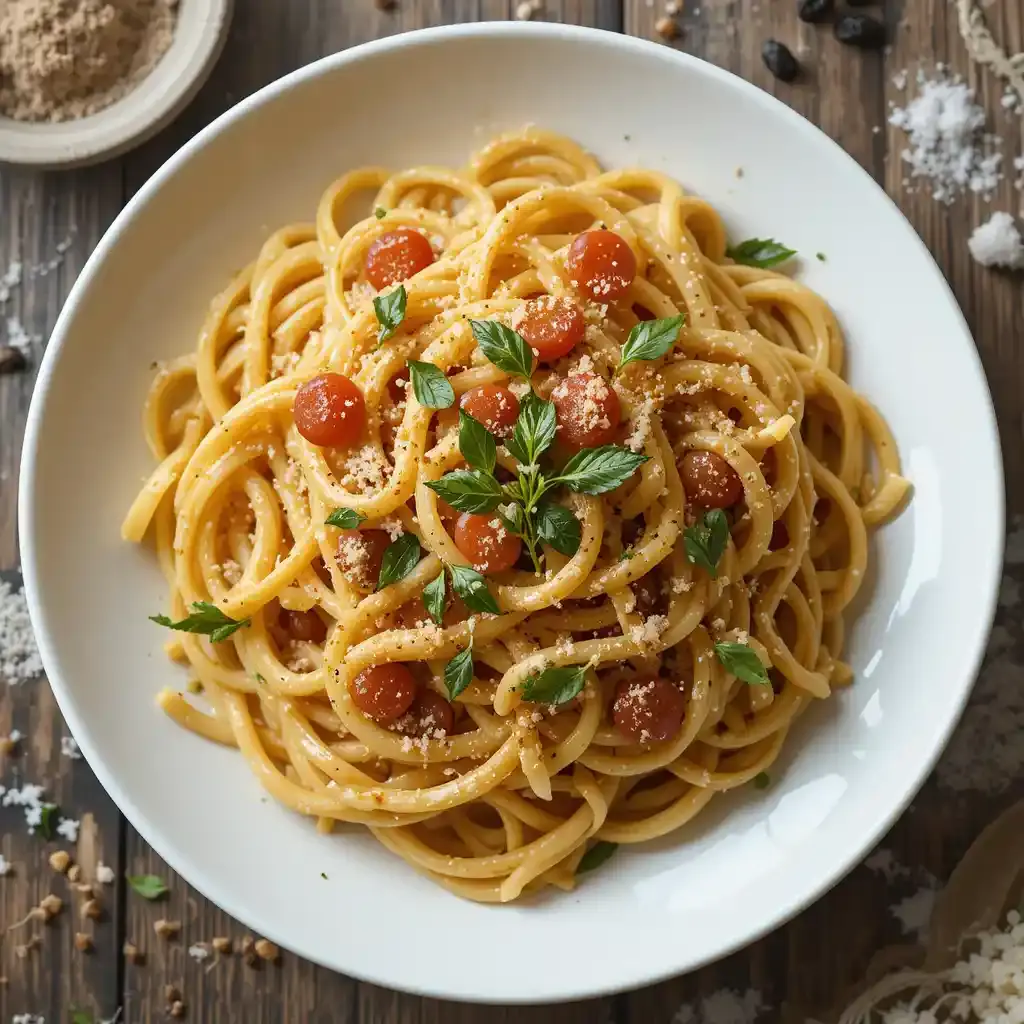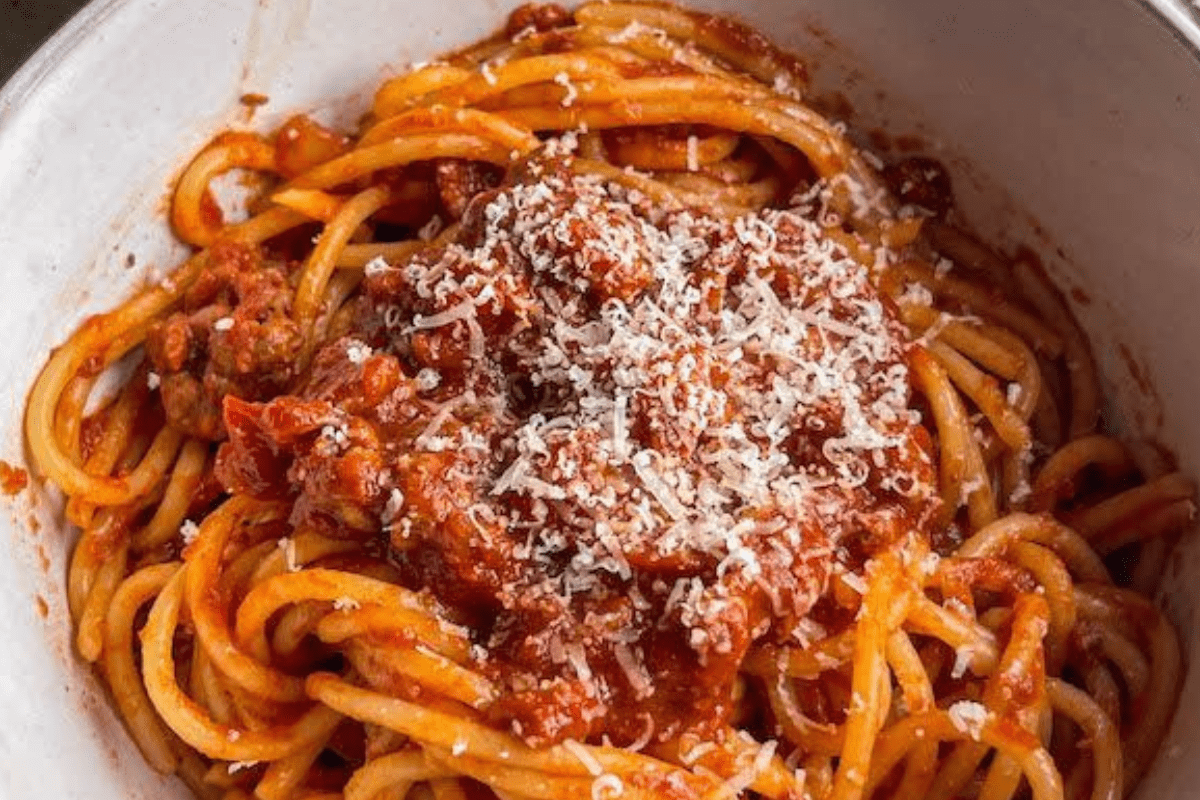Table of Contents
The Timeless Allure of Pasta: A Culinary Journey
Pasta is more than just a food; it’s a cultural icon, a staple of comfort, and an art form in kitchens worldwide. When you think of pasta, does your mouth water in anticipation of a rich, hearty dish? Or do you imagine the endless possibilities for pairing different shapes with flavorful sauces? Whether you’re an expert home cook or a novice in the kitchen, pasta is a food that speaks to the soul. It’s a dish that transcends age, culture, and time, delivering not just nourishment but joy with every bite. This article will take you on a culinary journey through the timeless appeal of pasta, uncovering its fascinating origins, versatility, and the art of preparing it perfectly at home.
The Origins of Pasta: A Glimpse Into the Past
Where Did Pasta Come From?
The exact origins of pasta are still widely debated. While Italy is undoubtedly the country most associated with pasta, some historical records suggest that pasta-like foods were created long before its Italian fame. It’s even argued that pasta’s earliest origins trace back to China, where Marco Polo reportedly introduced it to Europe in the 13th century.
But, the first mention of pasta in Italy came from a 12th-century document, a treatise by a Sicilian nobleman who described the production of pasta-like food. The introduction of dried pasta was revolutionary because it was portable, affordable, and could be stored for long periods—making it ideal for both the peasants and the elite.
By the 16th century, pasta became a common food across Italy, but it was in the south of Italy, particularly in Sicily and Naples, that pasta production began in earnest. Today, pasta represents not just food but part of Italy’s national identity, intertwined with family recipes, regional pride, and culinary tradition.
Pasta’s Evolution: From Humble Beginnings to Global Phenomenon
Over the centuries, pasta underwent a significant transformation. Initially, it was made by hand using flour and water, and the drying process was rudimentary. However, as the industrial revolution took hold, mechanization allowed for mass production of pasta, giving rise to brands we know today.
In the early 20th century, pasta began its journey around the globe. Italian immigrants brought their beloved dishes with them to the Americas and elsewhere, and soon pasta became a favorite in homes and restaurants worldwide. Today, it’s safe to say that pasta is universally adored, whether it’s served in a hearty ragù, as a simple aglio e olio, or incorporated into casserole-style bakes.
Pasta Shapes and Their Significance
The World of Pasta Shapes: A Guide
One of the most remarkable things about pasta is the sheer variety of shapes. It’s not just about the look or texture; the shape of the pasta plays a vital role in how it holds sauce, its texture when cooked, and how it interacts with ingredients. Understanding pasta shapes can elevate your dishes from ordinary to extraordinary.
Long Pasta: Elegance on a Plate
Long pasta shapes like spaghetti, fettuccine, and linguine are designed to pair with lighter, oil-based or creamy sauces. The strands, when cooked to perfection, twirl elegantly around the fork, providing a satisfying bite every time. Long pasta shapes are traditionally associated with Italian dishes such as:
- Spaghetti: Often served with tomato-based sauces like marinara or in more refined dishes like spaghetti aglio e olio (garlic and oil).
- Fettuccine: Best known for its starring role in fettuccine Alfredo, this broad noodle pairs beautifully with creamy sauces.
- Linguine: The thinner cousin to fettuccine, linguine is perfect for seafood pasta dishes like linguine alle vongole (linguine with clams).
Short Pasta: Chunky and Full of Flavor
Short pasta varieties like penne, rigatoni, and farfalle (bowtie pasta) work well with heartier sauces, such as meat or vegetable-based ragu. These shapes are excellent at holding on to chunky bits of sauce and ingredients, ensuring every bite is flavorful. Some common short pasta shapes include:
- Penne: Penne is one of the most versatile short pastas, perfect for pairing with tomato, meat, or pesto-based sauces.
- Rigatoni: These large, ridged pasta tubes are excellent for holding sauces and ingredients in their grooves. They are perfect for dishes like baked ziti.
- Farfalle: Known for its distinctive bowtie shape, farfalle pairs well with lighter, cream-based sauces, vegetables, or simple pestos.
Stuffed Pasta: A Delicate and Luxurious Treat
Stuffed pasta varieties like ravioli, tortellini, and agnolotti are often reserved for more festive occasions but can be an impressive addition to any meal. Filled with ingredients like ricotta, spinach, or meat, these types of pasta are often served in broth or with a simple sauce. Examples include:
- Ravioli: These square or round pockets of pasta are traditionally filled with ricotta, spinach, or meat and served with butter or tomato sauce.
- Tortellini: Often filled with cheese or meat, tortellini is commonly served in a rich broth.
- Agnolotti: A delicate pasta typically filled with meat or vegetables and served in light sauces or broths.
The Science Behind Pasta Shapes
The shape of pasta affects not only its ability to hold sauce but also its texture when cooked. For instance, long pasta holds a lighter coating of sauce, whereas short, ridged pasta holds more substantial chunks of sauce. The key to making a great pasta dish lies in pairing the right shape with the appropriate sauce. Here are some essential tips:
- Ridges and grooves help short pasta shapes trap sauce, making them ideal for thicker, chunkier sauces.
- Flat and wide pasta, like fettuccine, is perfect for creamy or buttery sauces, as the surface area allows the sauce to coat it beautifully.
- Long, thin pasta such as spaghetti is great for lighter sauces that cling delicately to the strands.
The Art of Cooking Pasta: Mastering the Basics
How to Cook Pasta Like a Pro
Cooking pasta sounds simple, but there are some key techniques to ensure perfect results every time. Here are some expert tips to elevate your pasta game:
- Use Plenty of Water: The more water you use, the less likely your pasta will stick together. A good rule of thumb is 4-6 quarts of water per pound of pasta.
- Salt the Water Generously: Salting the pasta water is essential for flavor. Use about 1 tablespoon of salt per 2 quarts of water.
- Don’t Overcook: Always cook pasta al dente, or firm to the bite. This typically means cooking it for 1-2 minutes less than the package instructions.
- Save Pasta Water: Before draining, save a cup of the cooking water. This starchy water can help thicken sauces and help the sauce adhere to the pasta.

How to Make Fresh Pasta at Home
Making your own fresh pasta is an incredibly rewarding experience. Fresh pasta has a texture and flavor that simply cannot be replicated with dried varieties. Here’s a simple guide to making it at home:
Ingredients for Fresh Pasta
| Ingredient | Quantity |
| All-purpose flour | 2 cups |
| Eggs | 3 large |
| Olive oil | 1 tbsp |
| Salt | 1/2 tsp |
Steps to Make Fresh Pasta Dough
- Combine Ingredients: Start by making a well in the flour. Break the eggs into the well and then add the salt and olive oil.
- Form the Dough: Gradually incorporate the flour into the eggs, kneading the dough until smooth.
- Let the Dough Rest: Cover the dough with a damp cloth and let it rest for 30 minutes to an hour.
- Roll and Cut: Roll the dough as thin as possible and cut it into your desired shape.
- Cook: Fresh pasta cooks much quicker than dried pasta, usually in about 2-4 minutes.
Iconic Pasta Dishes from Around the World
Classic Italian Pasta Dishes You Must Try
When it comes to iconic pasta dishes, Italy offers some of the best. Let’s take a look at a few of the most beloved pasta recipes:
- Spaghetti Carbonara: This Roman classic is made with eggs, Parmesan cheese, pancetta, and pepper. It’s creamy and flavorful without the use of cream.
- Lasagna: Layers of pasta, meat sauce, cheese, and béchamel come together to create this comforting dish.
- Pesto alla Genovese: A basil-based sauce with garlic, pine nuts, and Parmesan. It’s the quintessential summer pasta sauce, often served with trofie or trenette.
Modern Pasta Dishes with a Twist
Pasta has evolved over time, and modern chefs continue to reinvent it with new flavors and techniques. Here are some creative takes on classic pasta dishes:
- Lobster Mac and Cheese: A rich and decadent twist on the classic comfort food.
- Zucchini Noodles: A low-carb alternative to pasta, zucchini noodles (or “zoodles”) are paired with a light tomato or pesto sauce.
- Vegan Pasta Primavera: A plant-based version of this spring-inspired pasta dish, featuring fresh vegetables and a vegan-friendly pesto sauce.
Pairing Pasta with the Perfect Sauce
The right sauce can make or break a pasta dish. Whether you prefer a rich, meaty ragu or a light, fresh tomato sauce, it’s important to match your sauce with the right pasta. Here’s a quick guide:
- Tomato-based Sauces: Best with long, thin pasta shapes like spaghetti or fusilli.
- Creamy Sauces: Best with wider pasta, like fettuccine or pappardelle.
- Oil-based Sauces: Light pasta shapes like spaghetti or linguine work best with these simple, flavorful sauces.
- Meat Sauces: Heartier shapes like rigatoni or penne hold up well with rich sauces.
Conclusion
Pasta is not merely a dish; it’s a journey of flavor and tradition. From its fascinating history to its versatile use in kitchens worldwide, pasta offers endless opportunities for culinary exploration. Whether you’re cooking a classic Italian dish or putting your spin on a modern recipe, pasta continues to captivate us. So, the next time you boil a pot of water, remember that you’re not just cooking food—you’re engaging in a centuries-old tradition that connects us to cultures and generations past. Enjoy every bite!
FAQ
1. Why is pasta considered a timeless dish?
Pasta has remained a staple in kitchens worldwide because of its versatility and ability to pair with countless ingredients. Moreover, its simplicity in preparation makes it accessible to everyone, from novice cooks to seasoned chefs.
2. What are the origins of pasta?
Pasta’s roots trace back thousands of years to ancient civilizations, with many associating it with Italy. However, it is believed that early forms of pasta-like dishes also existed in Asia and the Middle East. Over time, Italy became the cultural home of pasta, refining its recipes and elevating it to a global culinary icon.
3. How has pasta evolved over the years?
Initially, pasta was made with basic ingredients like flour and water. Today, it has evolved to include various types, such as whole grain, gluten-free, and vegetable-based options. In addition, modern chefs have experimented with unique sauces and flavors, expanding its appeal beyond traditional recipes.
4. What makes pasta a versatile ingredient?
Pasta can be paired with almost any ingredient, from rich tomato-based sauces to light and creamy blends. Furthermore, its ability to be served hot or cold—like in pasta salads—makes it suitable for any season or occasion.
5. Is pasta healthy?
When consumed in moderation, pasta can be part of a balanced diet. Opting for whole-grain or protein-enriched varieties adds nutritional value. Additionally, pairing it with vegetables, lean proteins, and healthy fats enhances its health benefits while maintaining its delicious flavor.
6. Why does pasta bring people together?
Pasta has a unique way of creating a sense of comfort and community. Whether it’s a simple family dinner or a celebratory feast, its universal appeal transcends cultural boundaries, making it a dish that connects people across generations and regions.


2 thoughts on “Pasta: The Best Dinner for 2024”